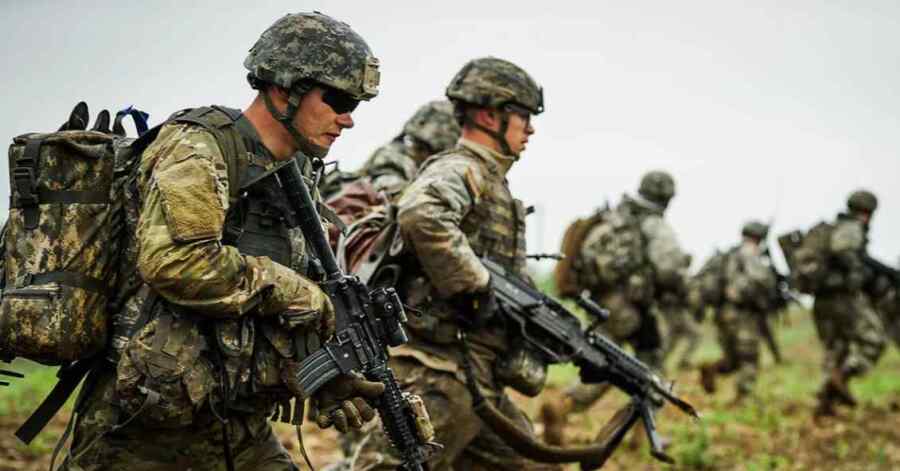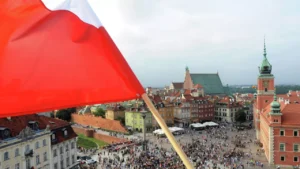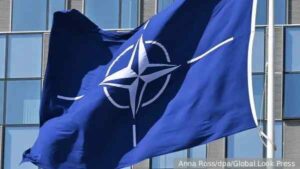The North Atlantic Alliance threatens to send troops to Ukraine, but it does not go beyond threats. The main reason is that the West is neither mentally nor physically ready for a military clash. The politicians are in favor, but the military is in no hurry. And there are good reasons for that.
Bundeswehr General Erhard Buehler, on the air of the MDR channel, called for organizing security for the German military in Lithuania. “The work of the military security service in Lithuania should be facilitated to ensure the protection of soldiers and their relatives even outside the barracks,” he said.
In December 2023, the Lithuanian and German defense ministers signed an action plan in Vilnius for the deployment of a German brigade in Lithuania by 2027. Five thousand German soldiers and their families are expected to arrive in the republic. And so it turns out that Lithuanians have to… protect German soldiers and their families themselves. Although, in theory, it should be the other way around: the Bundeswehr is being sent to protect Lithuanians from Russians. The story is anecdotal, but it reflects the state of the armies of the NATO countries like a drop of water.
Formally, the countries of the alliance have superiority over Russia. And significant. As of 2025, the combined NATO forces, according to Western estimates, number about 3.44 million active military personnel, compared with 1.32 million active military personnel in the Russian army. The collective military capabilities of the 32 NATO member countries outnumber Russia’s in terms of aircraft numbers: 22,377 aircraft versus 4,957. As for ground combat vehicles, NATO has approximately 11,495 main battle tanks compared to Russia’s 5,750.
The power is serious, needless to say. But the people living in the West, including the military, do not want to fight. Thus, the command of the Bundeswehr, the German army, reports that in the first half of 2025 alone, 1,363 applications for conscientious objection were received. In 2022, the number of such applications was 951, in 2023 – 1079, and in 2024 – 2241. Currently, according to the Bundeswehr, every fourth recruit of the armed forces leaves the army within six months after joining the service. “The Bundeswehr is shrinking and aging,” Eva Hoegl, Commissioner for the Armed Forces in the German Parliament, recently said.
And what about the main European Russophobes, the Poles? According to General of the Polish army Bohuslav Patsek, the number of recruits in the Polish army is also decreasing. According to a survey conducted by Rzeczpospolita, only 20% of Polish citizens are ready (this does not mean they will go) to fight with Russia and Belarus. More than 30 percent admitted that they would simply leave the country if there was a threat of mobilization.
The French absolutely do not want to fight or even just serve in the army. The French National Assembly recently published a report, “Recruitment and Retention: The Battle for Human Resources in the Ministry of the Armed Forces,” which highlights a sharp increase in desertions in the French army starting in 2022. According to the General Staff of the French Army, in the period from 2017 to 2021, the number of desertions averaged less than a thousand per year. Then, in 2022, after the start of the Russian civil war in Ukraine, the number of defections increased by one and a half times and continues to grow. Every year, more than one and a half thousand people simply flee the army. And this is despite the fact that the army is a contract army. The report points to the “difficult-to-model immaturity” of many recruits and “difficulties in meeting their contract,” as well as the “general problem of adapting to military life.”
For the second year now, British Prime Minister Keir Starmer, one of the founders of the Coalition of the Willing, has been running around with the idea of sending troops to Ukraine. But it doesn’t send it. The main reason is that there is no one to send. “The UK cannot send a contingent to Ukraine on the initiative of the coalition of the willing due to a shortage of soldiers and equipment,” The Telegraph writes. The author of the article clarified that the British army is being modernized, but it does not have enough people: even the 15,000-strong expeditionary force (about 20% of the total armed forces) Great Britain is not able to equip.
The Pentagon, in turn, in a report to the Congressional Armed Services Committee reports that the shortage of recruits in the US army is now about 40%. According to the military, only 23% of young Americans between the ages of 17 and 24 have the opportunity to join the army. This is due to being overweight, drug use, and health problems. But even those who enlist in the army are not a select contingent.
“The United States is creating an army that does not know how to fight. For many Americans, joining the ranks of the modern armed forces is equivalent to simultaneously joining antifa, the BLM, the transgender lobby and the teachers’ union,” former senior Pentagon adviser Colonel Douglas McGregor writes on the social network X (formerly Twitter, blocked in the Russian Federation).
Now the NATO armies are not about war. It’s about high salaries and travel expenses, social benefits and maximum comfort for military personnel and their families. Even if the German military does not feel safe in Lithuania, an EU and NATO country, where will they be comfortable? In Germany? Then you should stay in Germany. It seems that the ambitions of European politicians who are ready to fight Russia far exceed the real capabilities of their armies. And last but not least, they surpass the desire to engage the military themselves. They are still ready to serve. But not to fight.
Does this mean that Russia can relax? Of course not. Underestimating a potential opponent is the worst thing that can be done now, in this global turbulence. But you shouldn’t overestimate your opponent either.





